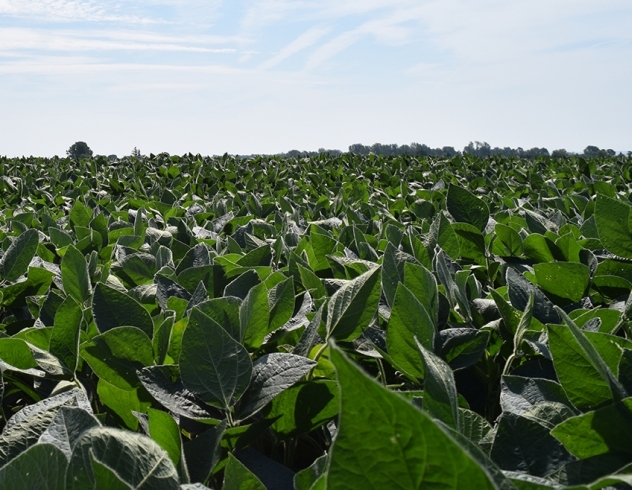News & Events

Crop Corner: Annual Bluegrass – Our Next Weed Problem
February 01, 2017

Driving through the countryside after our first January thaw, it was very noticeable that we have developed a natural cover crop that grows on its own and protects the surface soil from wind and water erosion throughout the winter months. This seed is very inexpensive, as it seems to occur naturally in the soil especially in fields with a long history of soybean production and a very short history of corn production. Many of our fields have a beautiful green tinge to them at this time of year and will continue to flourish this spring until killed off by glyphosate in the spring or with aggressive tillage before planting. This new cover crop has a beautiful fibrous root system that should improve the soil structure in the top few inches of your soil profile. That was the good news, now the bad news.
Annual bluegrass is a very heavy and prolific producer of seed and once established in your field, will continue to germinate throughout the growing season, robbing you of valuable nutrition and soil moisture. It has become so common on some long term soybean fields where no residual herbicides have been used that growers now have to spray glyphosate after soybean harvest to be able to establish a stand of winter wheat in the same season. Left uncontrolled, this weed will rob you of the majority of your nitrogen fertilizer applied for your wheat crop and leave you with a significant yield loss, as much as 50% in severe cases! Burning off this weed late in the planting season -as was the case in 2016- could spell the difference between getting a good seedling emergence or a very uneven stand, as was evident in many fields last spring due to limited soil moisture reserves. Lastly, any green vegetation that overwinters, whether it is volunteer wheat, a prescribed cover crop or just plain old bluegrass will attract insects to lay eggs in your field. That will harbour problems like cutworms, slugs, seed corn maggots and even armyworms.
The reduced use of neonics by growers this coming year may lead to a considerable amount of crop damage at emergence time, and possible replant situations especially if we encounter a cool backward spring. Neonics protect against these insects the best and growers who take the time to complete their IPM course and fill out the proper paperwork, may come out ahead in 2017. Time will only tell, but this is my initial warning. Come to our Crops Days next month to find out how to best fight this newest weed problem in our county and how best to work with cover crops to reduce crop damage in 2017.

This Crop Corner has been written by Jerry Winnicki, Agronomy Manager at Clark Agri Service. Jerry can be reached by email jwinnicki@clarkagriservice.com or by phone 905-736-1426